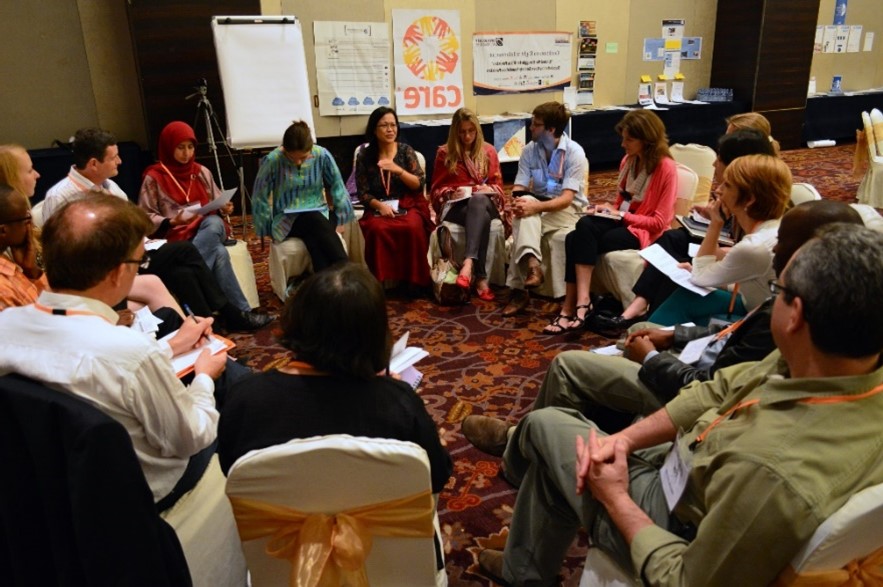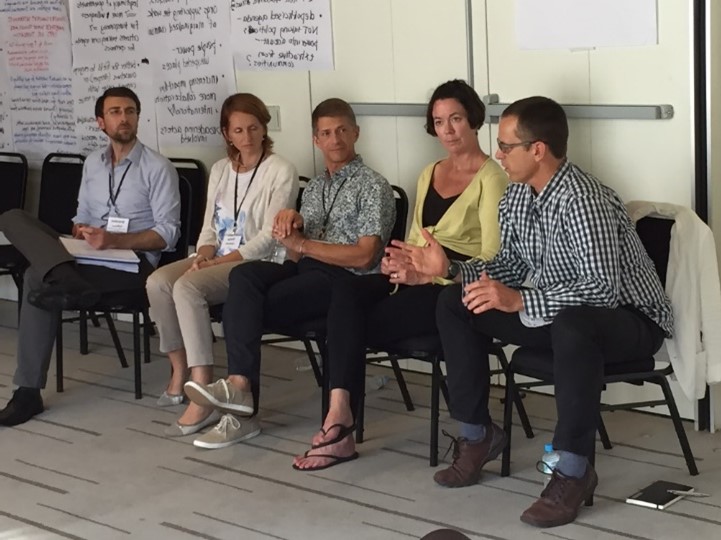Jan 23, 2023

Learning collectively is vital to addressing the shared challenges we face around the globe. A Community of Practice can be a powerful vehicle for collective learning. But it’s not straightforward, and there are many challenges to enabling and sustaining a learning community.
From 2013 to 2016, I was the convener of a Community of Practice called “TALEARN”. TALEARN was created by a diverse group of funders, NGOs (international and national, generally based in the global south), and researchers all focused on promoting greater transparency, citizen participation and accountability in governments around the world. There was a growing understanding by the group that created TALEARN that the field was evolving quickly and there was a lack of space for shared learning across organizations working on similar issues. There was a strong desire to learn from each other about “what works” and other key strategic questions.
TALEARN was comprised of some 100 members, of whom around 30 were more active “core” members with 6-8 playing a more prominent leadership role. The Community of Practice had 6-8 working groups at any given time centered around a focus area, for example strengthening theories of change or understanding the role of grassroots action. Each working group had a modest agenda centered around sharing resources and lessons, and in some cases had undertaken a focused joint project. The working groups connected virtually, with occasional in-person workshops to move their shared agendas forward. Approximately 60 TALEARN members gathered in-person every 12-18 months for a larger workshop to reconnect, deepen learning, and chart next steps together.
Challenges to Collective Learning
Sustaining meaningful and useful learning and engagement in TALEARN was a challenge. Primarily because members were very time constrained, so their availability to contribute to the community was limited. An initial digital platform for informal discussion among Community members, with a focus on the working groups, was eventually abandoned as members saw it as “one more thing to check” in addition to full email inboxes, etc. I introduced a quarterly newsletter to provide some communication of relevant resources, events and other updates among TALEARN members, but this had the limitation of being uni-directional.
A related challenge was that of leadership. While there was a core of active members who felt significant ownership of TALEARN, they felt it was hard to “lead” and often looked to me as the convenor to play a more prominent role, particularly in spotting and connecting ideas, issues, discussions and opportunities across the group.

Finally, there were some tensions among the kinds of learning that a Community of Practice can and should prioritize. While the initial learning questions that TALEARN was created to address were broader, strategic issues, the time constraints on participants meant that workshop groups generally (but not always) focused on narrower, more practical learning. Thus, there were a number of opportunities to share and discuss a particular resource, case or experience. As the convener, I sought to use the bigger workshops as an opportunity to generate collective learning towards the bigger learning questions, sometimes by framing the workshops around emerging strategic lessons for discussion.
Lessons Learned
One very practical lesson that I took away from my time supporting TALEARN was that members will have varying levels of engagement, mostly rather modest, and the Community of Practice should intentionally accommodate this. The quarterly newsletter was appropriate for members who just wanted to be kept up to date on TALEARN and key updates from the field. The international workshops kept a significant set of members connected periodically to deepen relationships and learning. Members with a particular interest could use working groups to address shared questions and priorities through relatively modest or somewhat more ambitious activities and exchanges.
Another lesson was to keep a balance between more specific and practical learning, like a webinar to discuss a particular case or experience, and making progress towards bigger strategic questions that TALEARN was created to address. Most of the engagement was around the former, but the infrequent international workshops were an opportunity to engage with and generate more strategic shared lessons.
A final lesson was the importance of keeping track of the engagement, learning and other outcomes of TALEARN intentionally. To that end, I developed a framework for thinking about the tangible and intangible impacts of the Community of Practice. I also sought to continually understand what members would find useful from their engagement with TALEARN and encouraged them to be “selfish” in asking for specific contributions that often aligned with what other members were also interested, informing joint engagements or projects.
What Community of Practice have you been part of?
Brendan Halloran is the Head of Strategy and Learning at the International Budget Partnership (IBP) where he supports collective learning processes among IBP staff and partners. Previously, he was the Program Officer for Impact and Learning at the Transparency and Accountability Initiative, which hosted the TALEARN community of practice from 2013 to 2016. Brendan is also a GLP Certified Dialogue Education Practitioner (CDEP).
Read here for more blogs by International Budget Partnership (IBP).
Here are other blogs you may be interested in:



